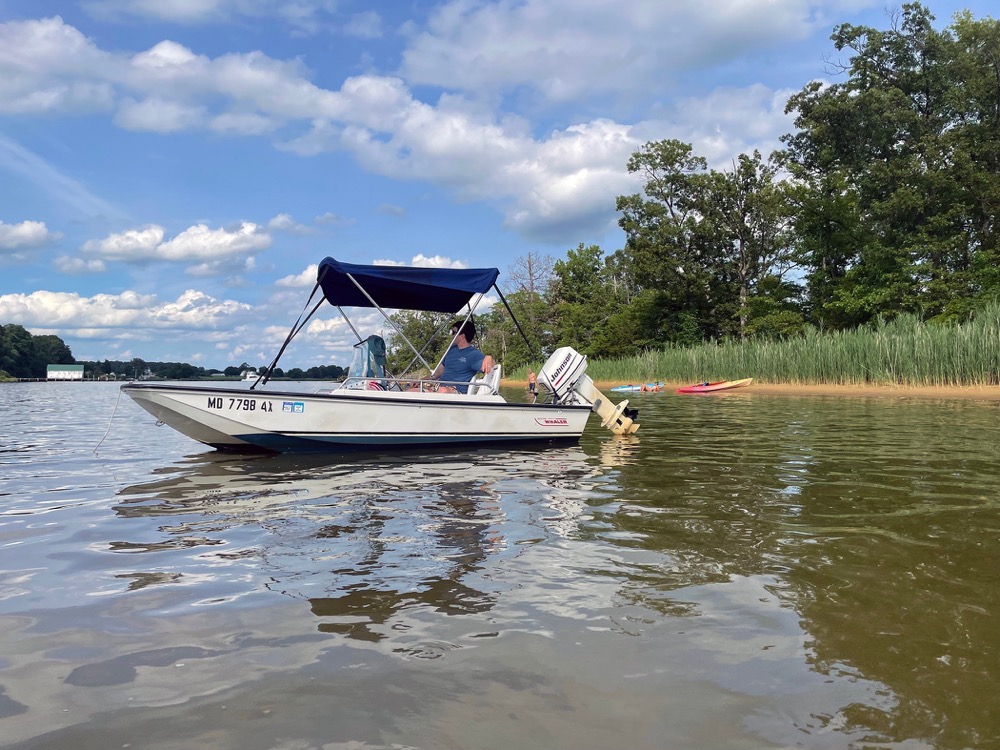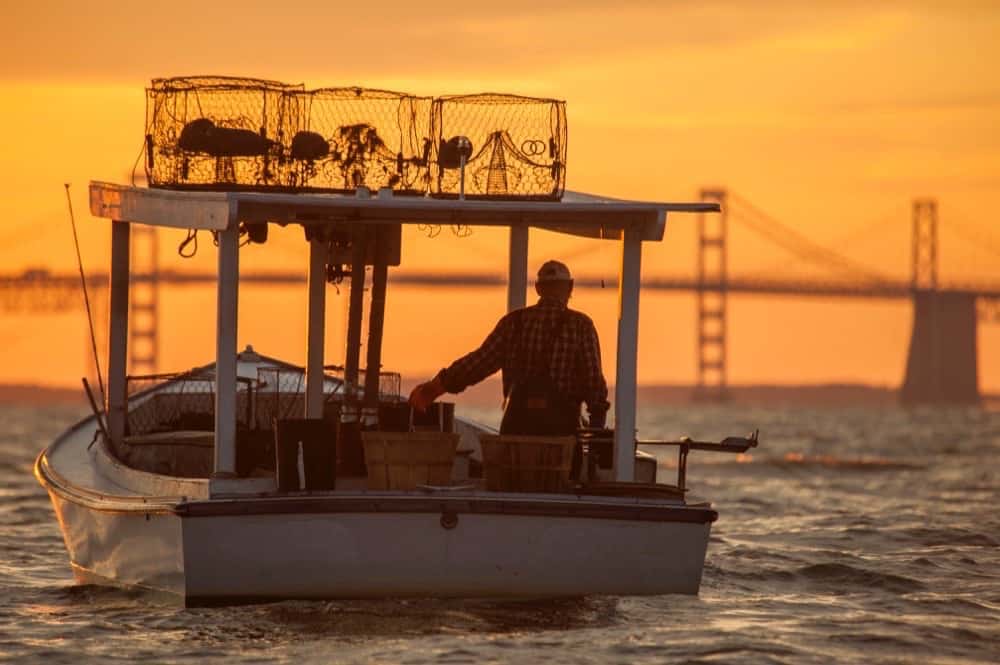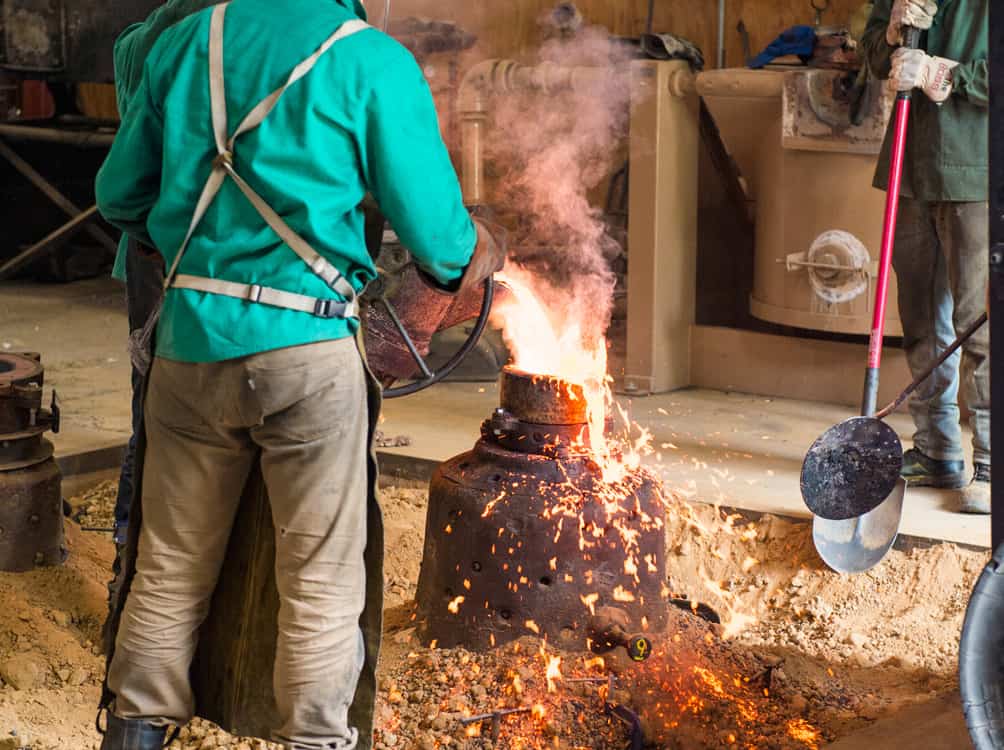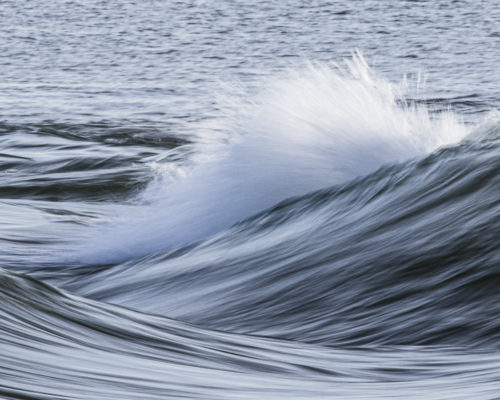An old Boston Whaler opens up a new world.
A good friend of mine—a lifelong Chesapeake environmental educator—is fond of saying:
“If you live in the Chesapeake and you’ve never been out on the water, you’re missing out on 90 percent of what this region has to offer.” I think he’s right. So much of the magic and dynamism happens here at the edges, where the land stops and the water begins. Ospreys diving and fluttering up, perch grasped firmly in talons. Huge marshes full of wild rice and hungry red-winged blackbirds.
On smaller craft—kayaks, paddleboards, canoes—you can thread the edges of that 90 percent, nosing your way into the oxbows and coves of shallow water tributaries. But for bigger experiences and bigger water, nothing can beat the freedom of a river skiff. Easy to launch, tow, and run, a nimble little motorboat is the key to really getting out there. A passport to new rivers, a just-big-enough-boat can take you to unexpected encounters, secret beaches, and little glimpses of that wild paradise John Smith explored.
For me and my husband, Ben, the search for a river boat of our own started a few years ago. Budget dictated that it was going to be old as well as small. But that was not a problem. I grew up in Boston Whalers, fishing, crabbing, swimming, getting jellyfish stings—you know, really living. To me, an ’80s Super Sport had it all. Durability, check. Shallow draft, check. Capacity, timelessness, and aggressively boxy ’80s styling you just have to love, check, check, check.
Fearless millennial online shoppers that we are, we scoured online listings on Facebook Marketplace and Craigslist. Much scrolling later, we found her—a 13-foot 1989 Super Sport with a 25 hp Johnson engine. We drove across the Bay to get a closer look. She was well kept but clearly well loved, nowhere near close to mint condition. We figured as long as the hull wasn’t holding water we’d be alright. The engine ran fine. We bought her on the spot.
We named her Elver, for the little glass eels that run up the river when the weather starts to warm. It was late spring, and time to commission our new vessel. This meant taking off all the (excuse my French) bull**** that had accumulated barnacle-like on her hull over the years—superfluous hardware to obsolete lines or gear, clamshell folding seats with ugly blue vinyl covers, a cracked rub rail installed over an even older rub rail. We stripped her down and removed 30 years of hasty decisions and quick fixes. At the end, she wasn’t so much a phoenix rising from the ashes as a baby beluga released from wildlife rehabilitation: solid, weighty, and ready to roam the rivers with tenacity if not elegance.
We’ve had Elver for three summers now, and every season brings new adventures. With a Kent County ramp permit and a full tank of gas, the possibilities are practically endless. Picnics and late afternoon swims at Cacaway Island. Nosing into Southeast Creek to watch the osprey circle overhead while a thunderhead splits around us. Heading upriver to see the starry blossoms of wild celery floating on the water’s surface, thick stands of the submerged grasses waving just below the waterline. Coming on a Chester River log canoe race wrapping up, sails fluttering and the crew’s legs dangling from hiking boards as they wait to get towed back to the dock. And once, magically, a bottlenose dolphin breaking the calm water of Langford Creek.
Even if we have to slow for the wake of bigger boats lest we get swamped, our petite river skiff has never failed to show us a good time. From dock bars to arrowhead hunts, raft-ups to cocktail cruises, Elver’s helped us create a whole new life centered around Chester River experiences. She has been a wonderful first boat, no matter that she’s small and a little long in the tooth. The funny thing is, for all her simplicity, she never fails to turn heads and provoke nostalgia. It seems that little Whaler Super Sports, powered by Johnson engines, were a lot of people’s first boat. “I had a boat just like that when I was a teenager in Oxford.” “My first boat was a Super Sport. They’re the perfect size—easy on gas, easy to maintain. I wish I still had that boat.” The moral of the story seems to be that you can size up, add bells and whistles, but at the end of the day, you can’t really improve upon something that is already pretty damn great. It’s a good thing to keep in mind when you’re surfing the monster wake from another big cabin cruiser.
Maybe someday we’ll get something bigger; an 18-foot Montauk like the one I grew up on, perhaps. But for now, we’re happy to kick around in our feisty little Whaler.
I like to think of her as the logical progression in a long line of Chester River small craft—the log canoe, the bateau, the deadrise skiff, and now, Elver, all built for one person to run in smaller waters. Where my grandfather ran trotlines north of the Crumpton bridge in the ’40s on his bateau, we now explore on our own river boat. With one lucky purchase, and a little elbow grease, we’ve fully unlocked
a truly essential Chesapeake experience. It feels like a birthright, and a joyous one at that.
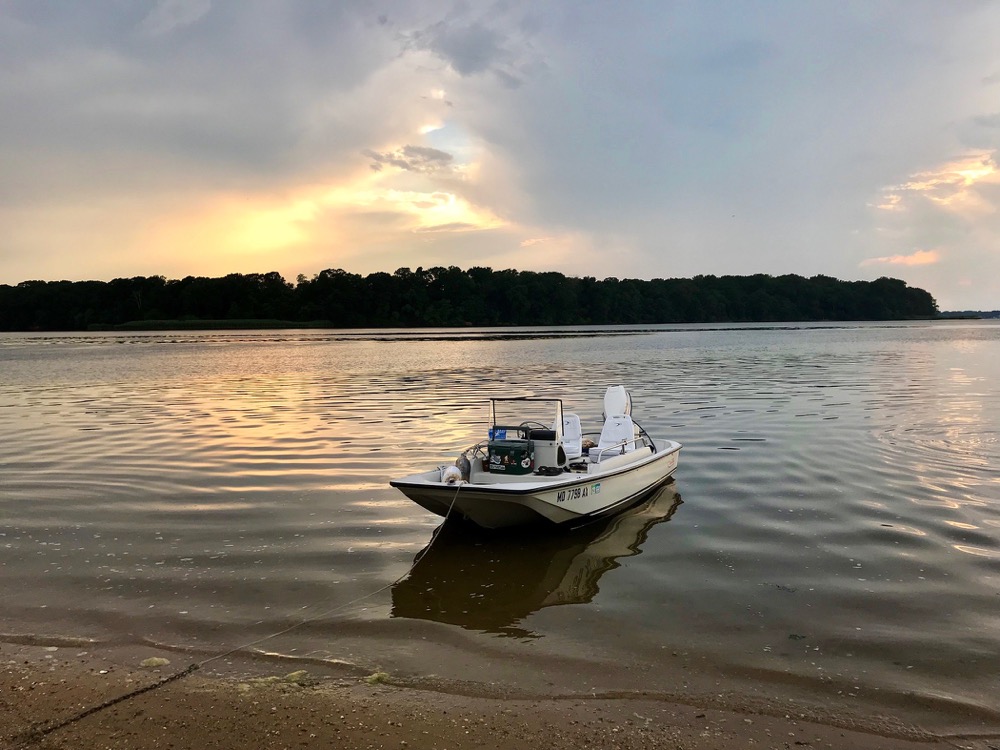
If you’re heading up the Chester on a summer evening, you might spot a little Whaler with a blue bimini. If there are two people on board who look like they’re having the time of their lives, that’s probably us. Give us a wave, and we’ll wave back, in the universal language of on-the-water camaraderie. Just do us a favor and watch your wake when you pass by.

